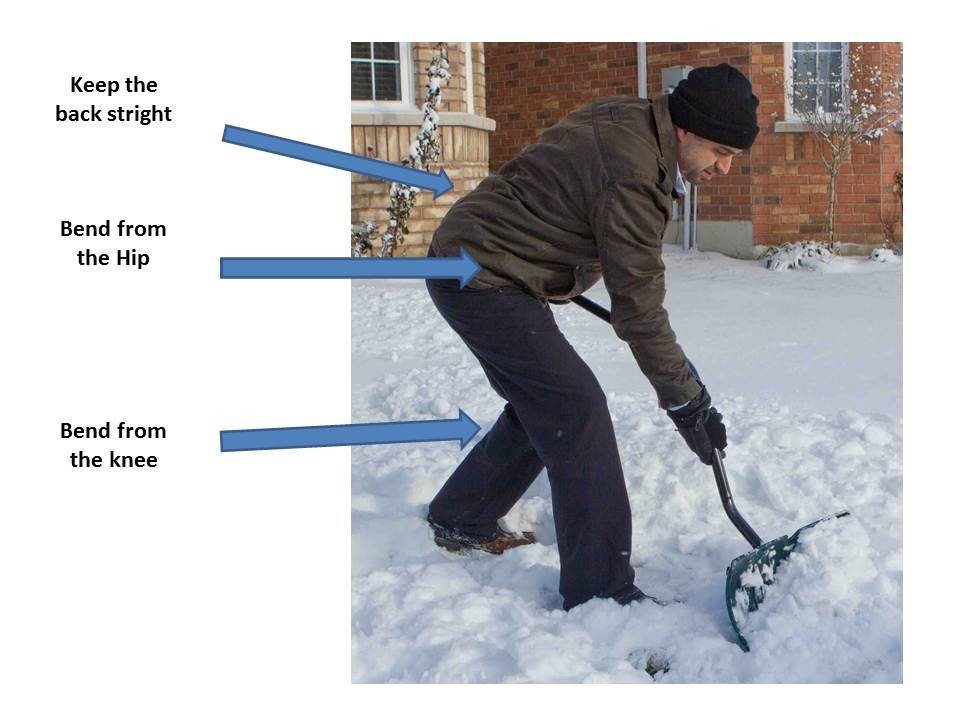Watch Your Back! Snow Shoveling Safety Tips
By Abby Sims
» More Columns
Happy snow day to you! Are you stuck with the unwelcome task of shoveling snow? I've got your back.
Snow can be pretty heavy, especially the really wet stuff. If you haven't been hitting the gym regularly or training for snow shoveling as your sport of choice, you may be waking up with some aches and pains. Here are a few tips to dig yourself out a little more safely.
1. Avoid holding your breath
Optimize the function of your respiratory system and utilize the more efficient aerobic mechanism for supplying your muscles with energy. In addition, you may get lightheaded or feel a headache coming on if you hold your breath.
2. Bend from your hips and knees, NOT your back
Just as when you do a squat, ski or even sit back into a chair, lean your upper body forward from your hips and knees while you balance your weight over your feet by leading and reaching back with your butt. Practice by doing squats to a chair without allowing your rear end to touch the chair.
CHECK: Latest | Forecast & Alerts | Radar | School Closings | Transit | Traffic | Severe Weather Guide | Send Photos
3. Maintain a neutral spine
That means neither bending nor arching away from your midrange comfort zone. For some, neutral is a flattened low back, for others a very mild arch, but it is never the very rounded back you will see when you observe some people shoveling.
To maintain neutral you will have to engage your abdominal and low back muscles, working the low back extensors most as you bend, to stabilize your low back and keep it from rounding. Emphasize (contract) your abdominals as you reach and rise. The heavier the load you are shoveling, the harder your muscles should work to keep your spine in neutral.

4. Avoid reaching too far
Shovel the snow close to you – the more outstretched your arms are when you lift, the heavier the snow effectively becomes, placing a greater strain on your low back. To understand this better, imagine playing on a seesaw when you were a kid. The farther you sat from the center axis, the "heavier" you became, making it possible to keep your friend on the other end up high off the ground.
5. Lift from your legs
Just as when you lift a heavy box from the floor, rise from your knees and hips to avoid overdoing the effort on your arms and back.
6. Consider wearing an abdominal belt
Some studies have shown that wearing a belt for heavy lifting activities raises intramuscular pressure of the back muscles (erector spinae) and in doing so helps to stabilize the low back (lumbar spine) during lifting exertions.
7. Pivot to avoid excess twisting of your trunk
Just as with a golf swing, allow your hips to move with your shoulders so that you require less rotation of your spine. For example, a right-handed golfer pivots over his right foot during his swing and follow-through while his left foot remains firmly in contact with the ground. When you are moving the snow from here to there, pivot over your back foot while turning your trunk toward the opposite side.
8. If the snowfall was a big one, lift and move it in layers to limit the weight
You don't have to dig all the way down to the sidewalk with each maneuver.
9. Take rest breaks and be sure to stay hydrated
You may not realize how much you are actually exerting when you shovel snow. Drink before you get thirsty to avoid dehydration, and rest to stay strong and refreshed.
10. Buy a snowblower, hire the kid next door or move to California!
A final caution: Delegate the shoveling if you have a cardiac history, a significant history of low back problems or are suffering from a shoulder or knee injury.
Abby Sims is a licensed physical therapist with vast experience evaluating and treating orthopedic, sports and dance injuries. Follow her on Twitter @abcsims



